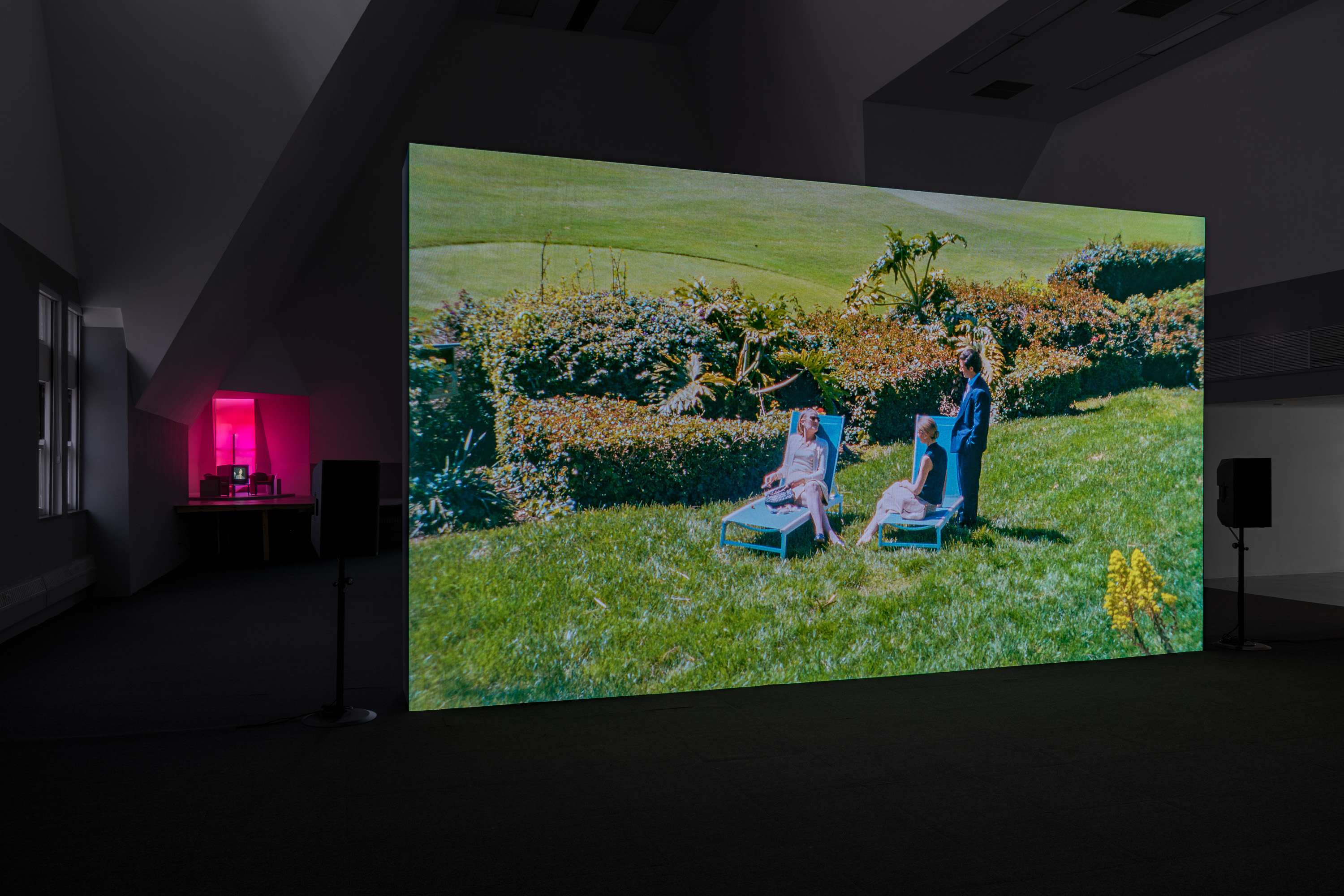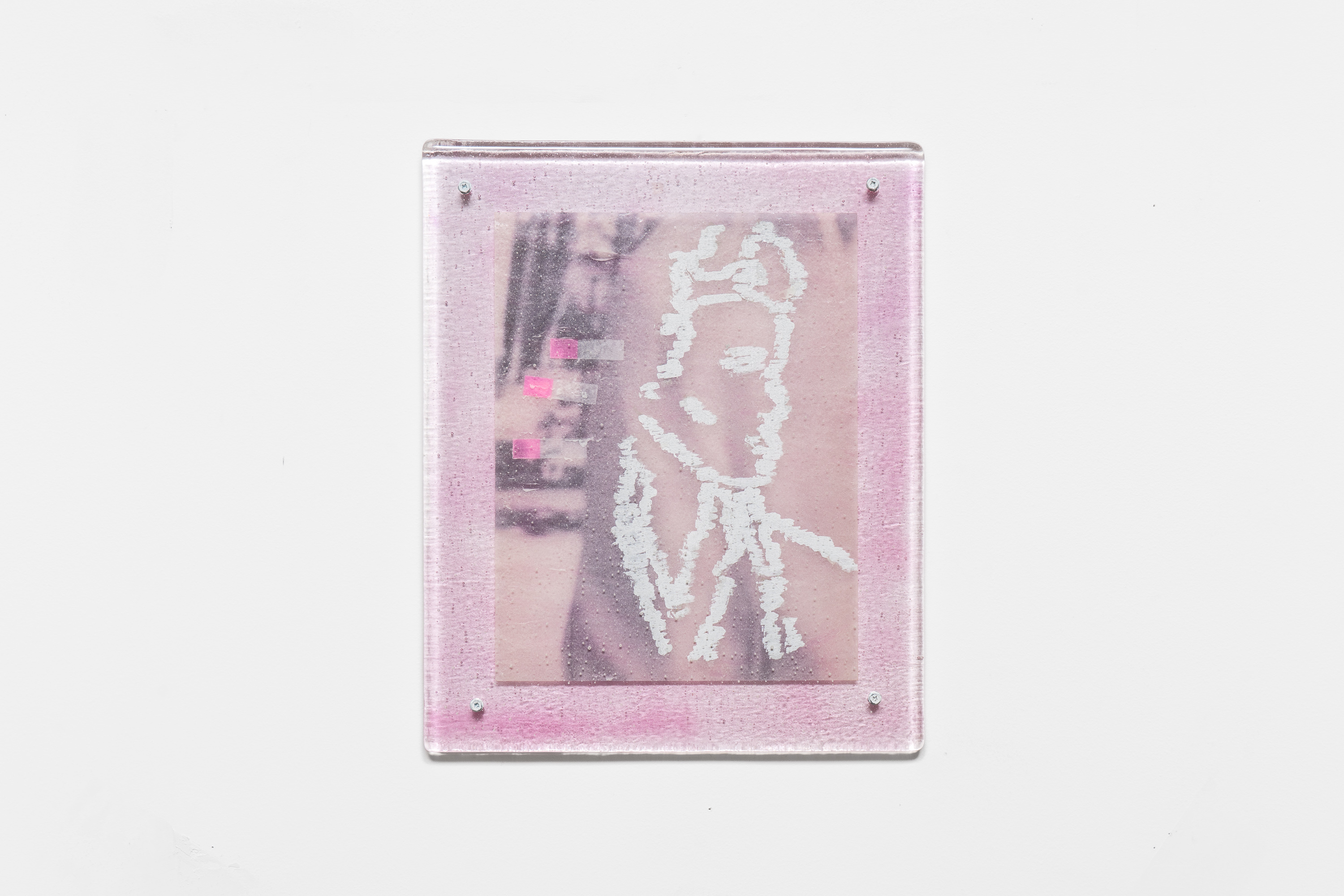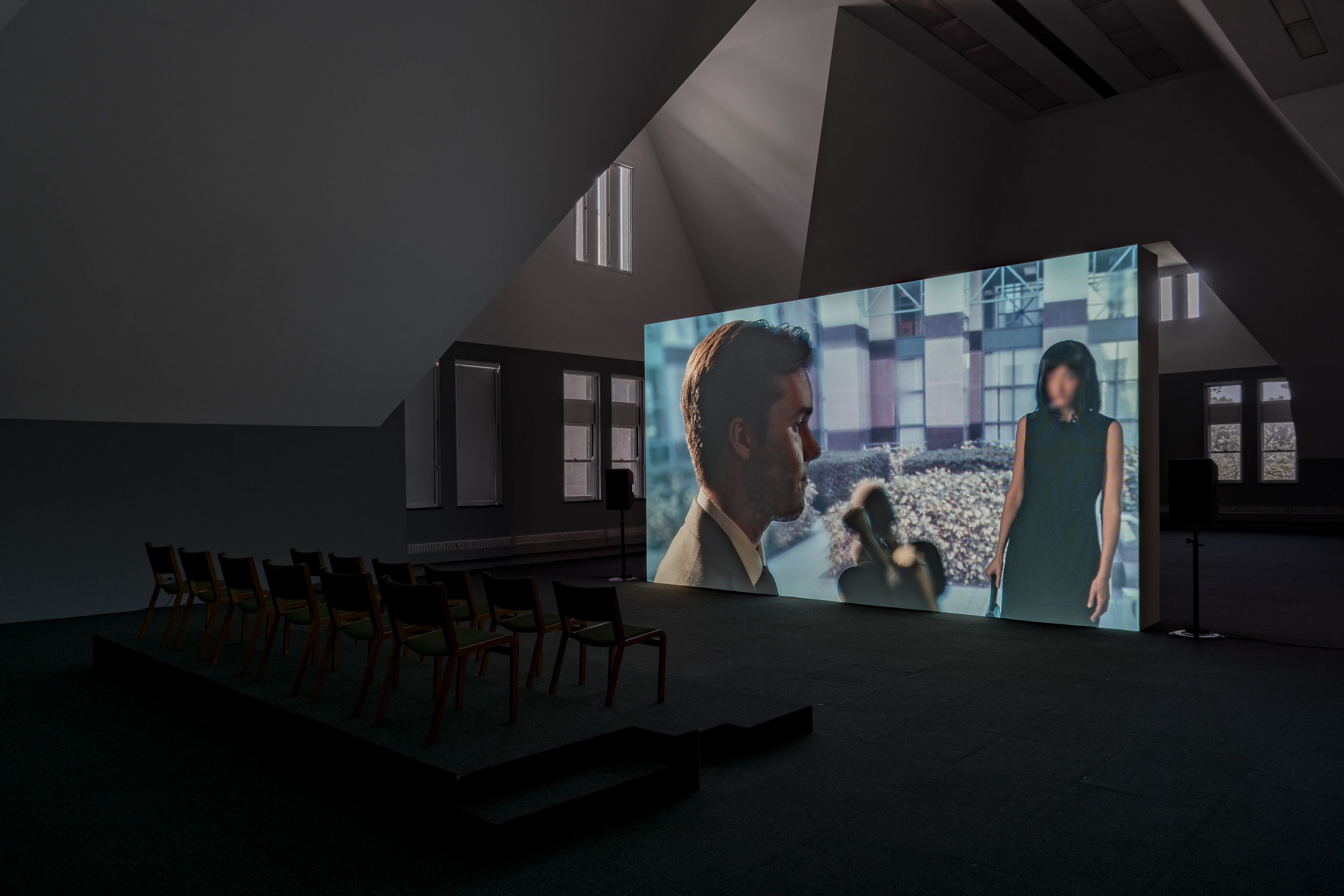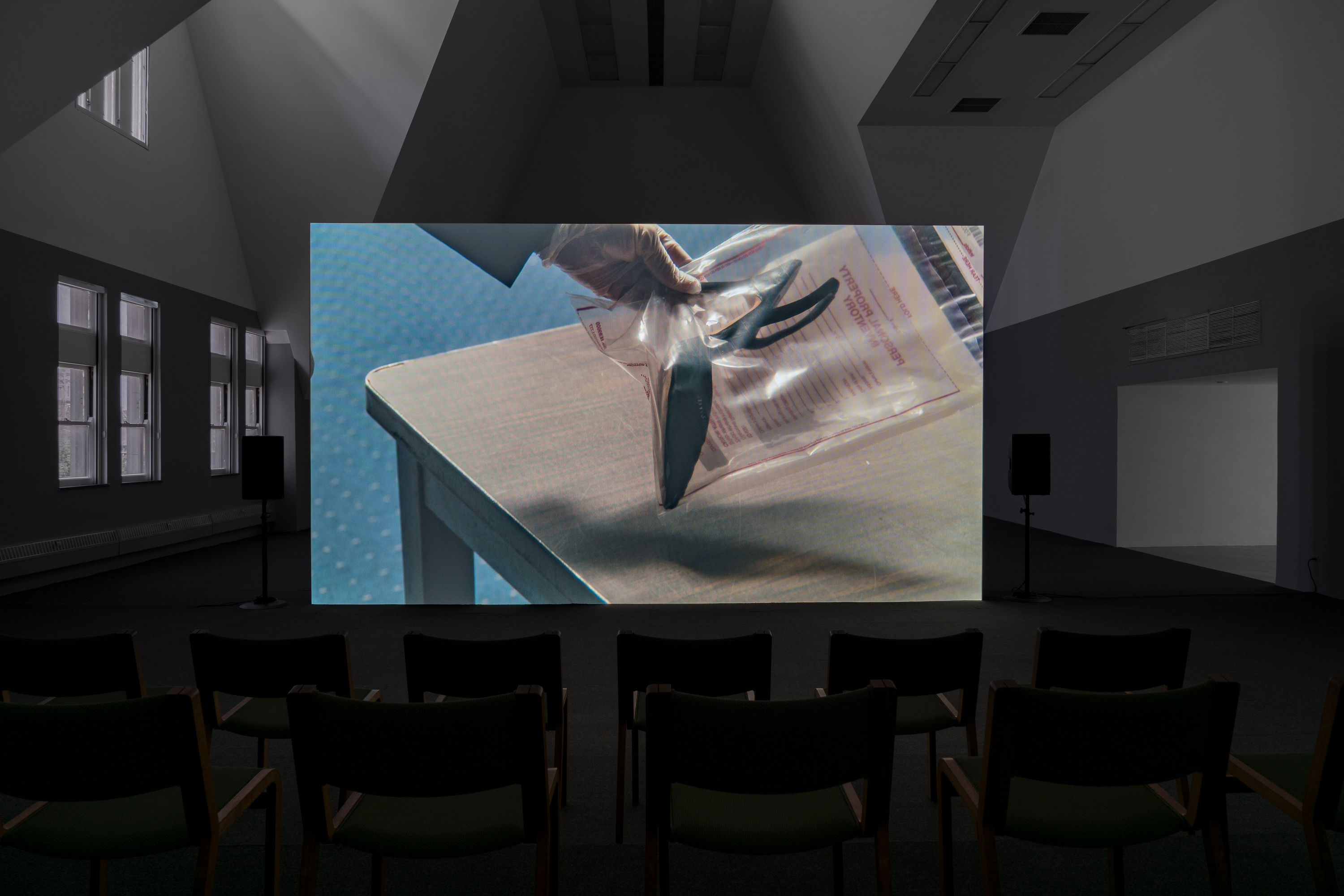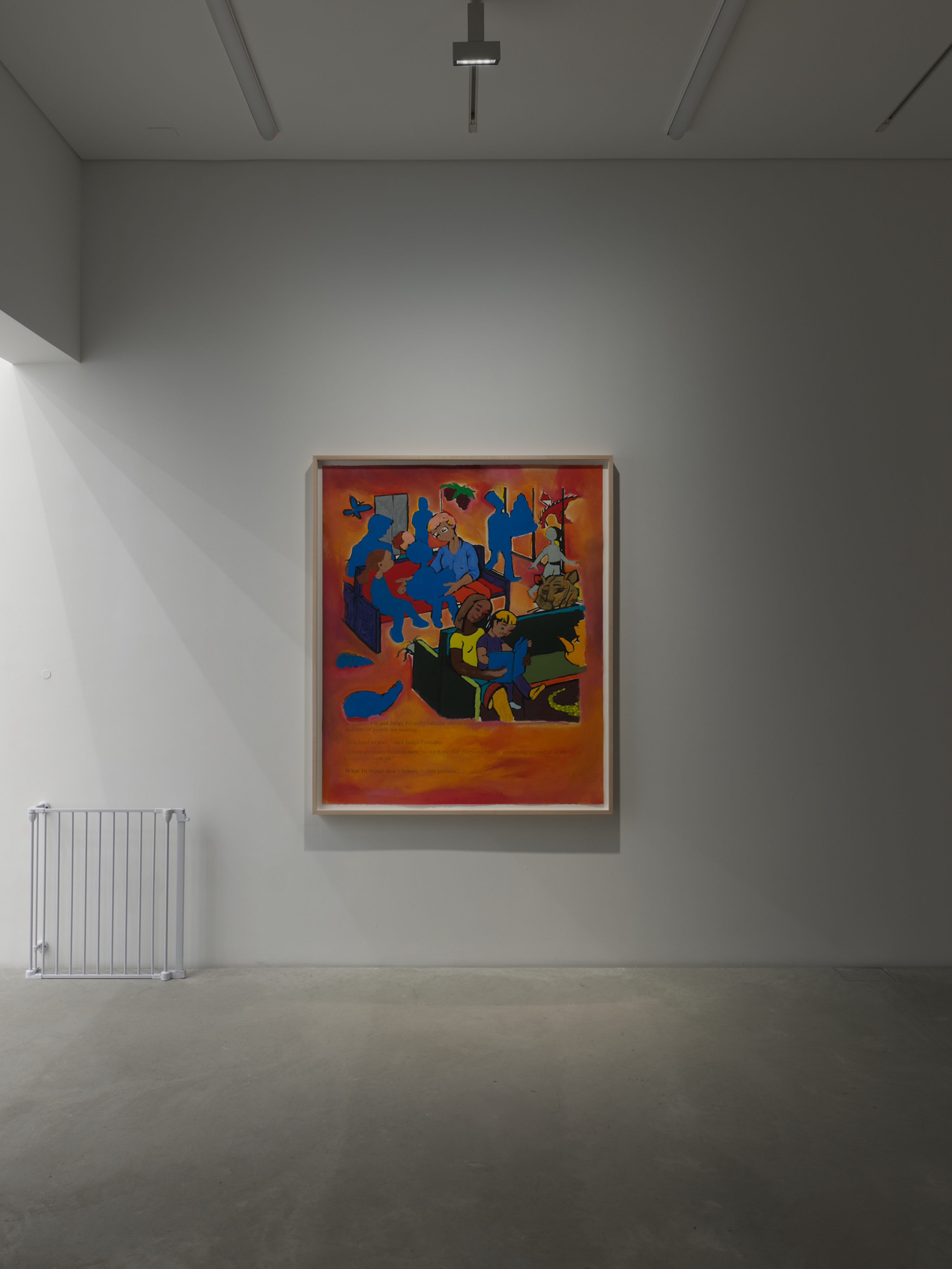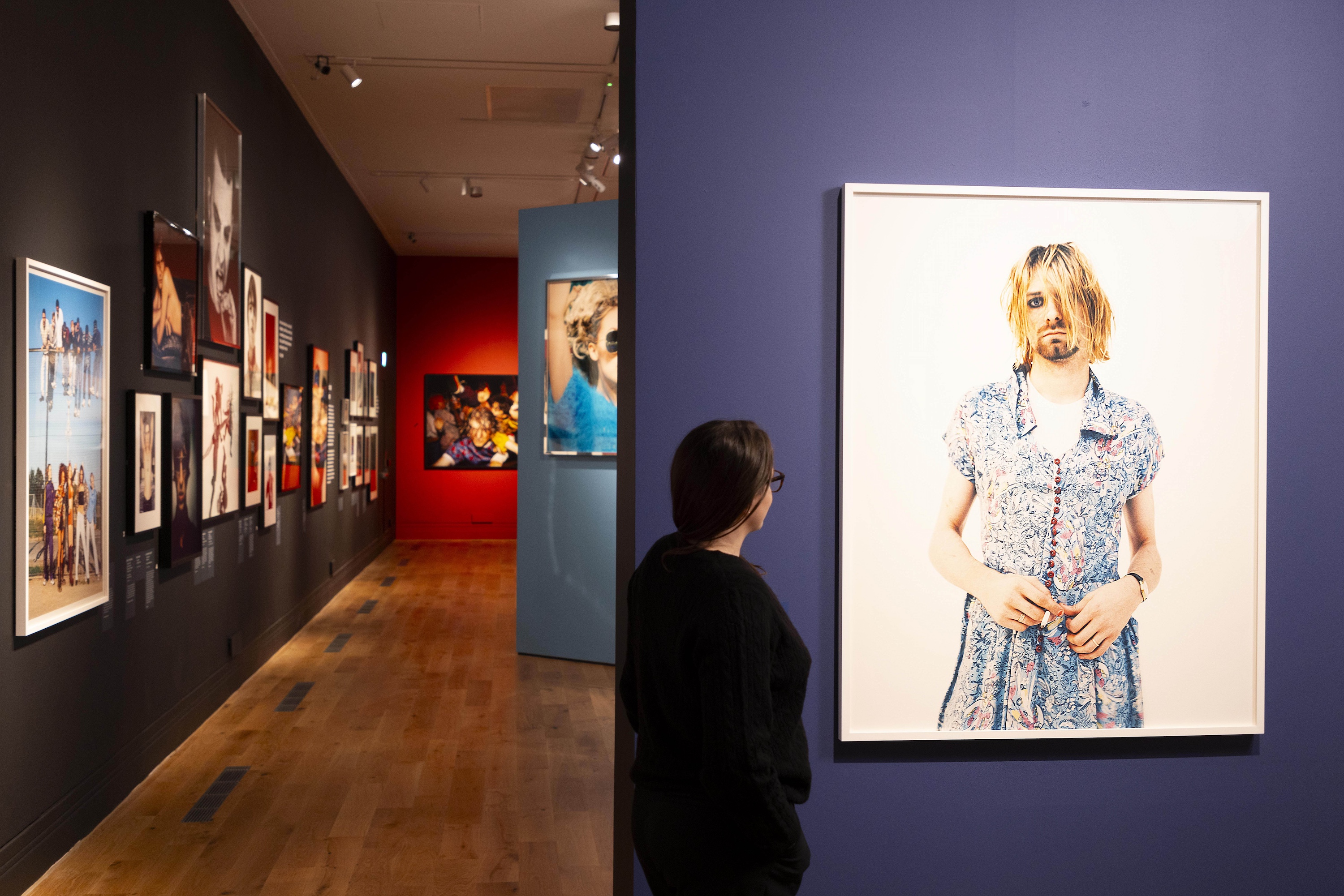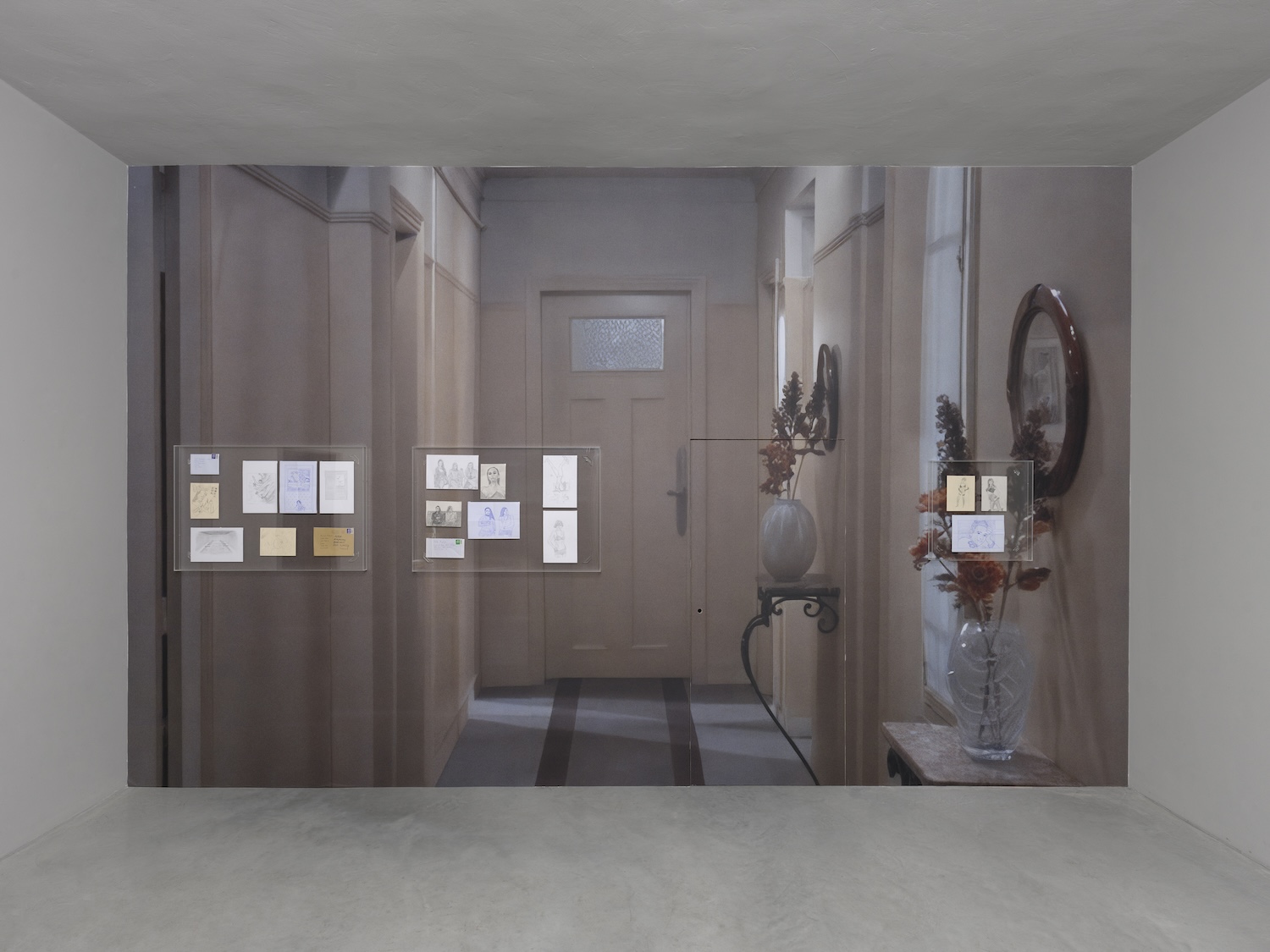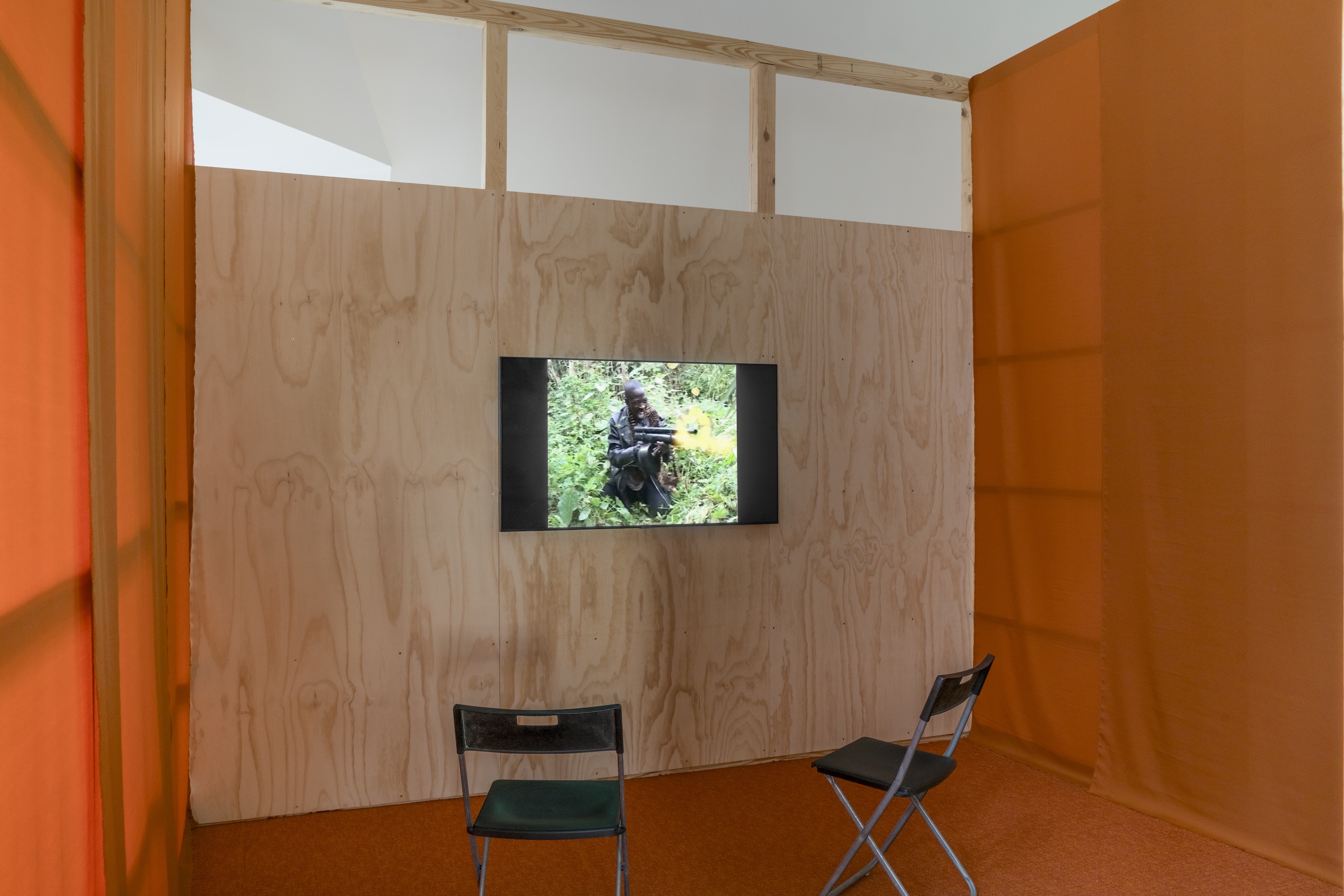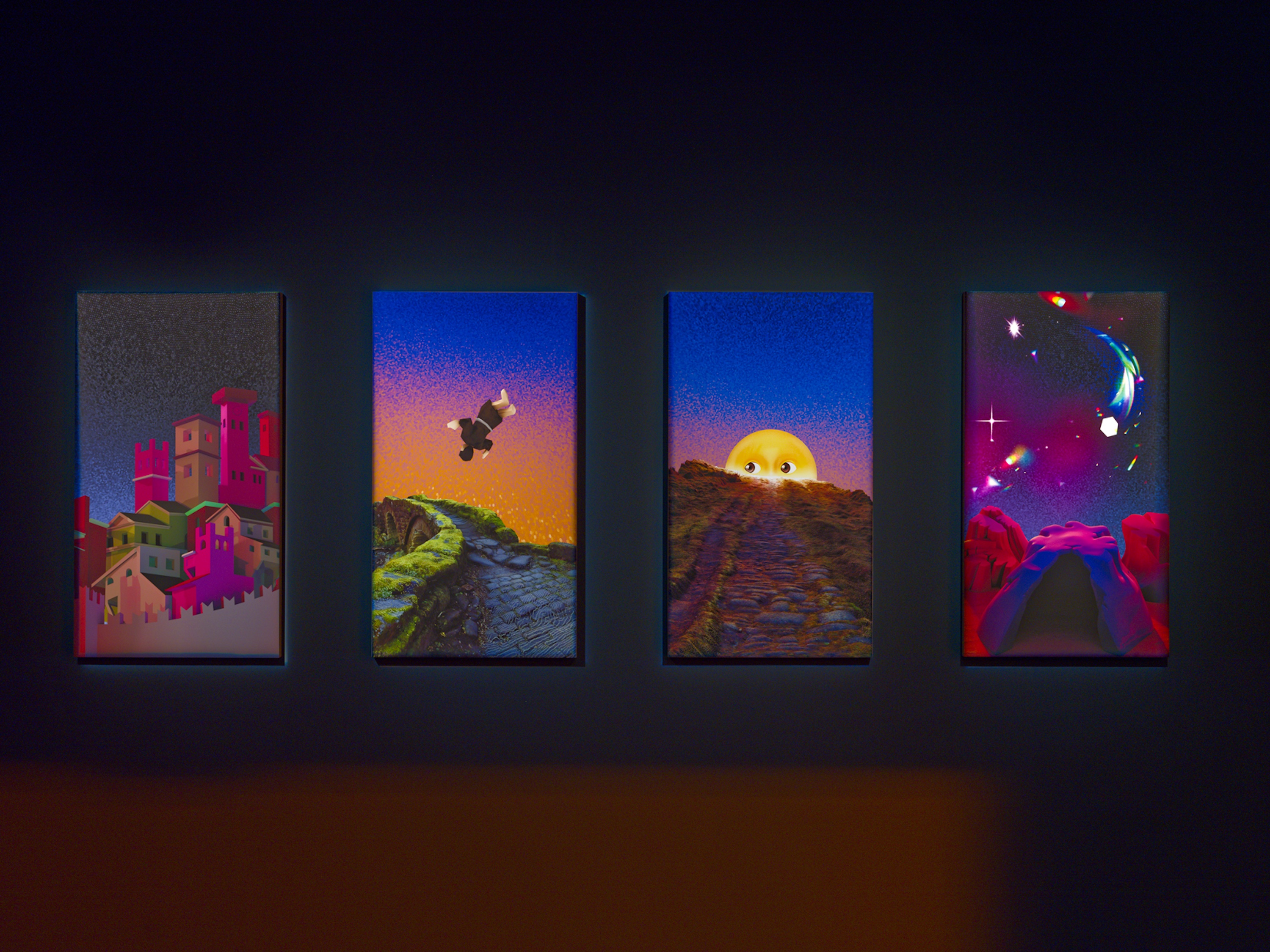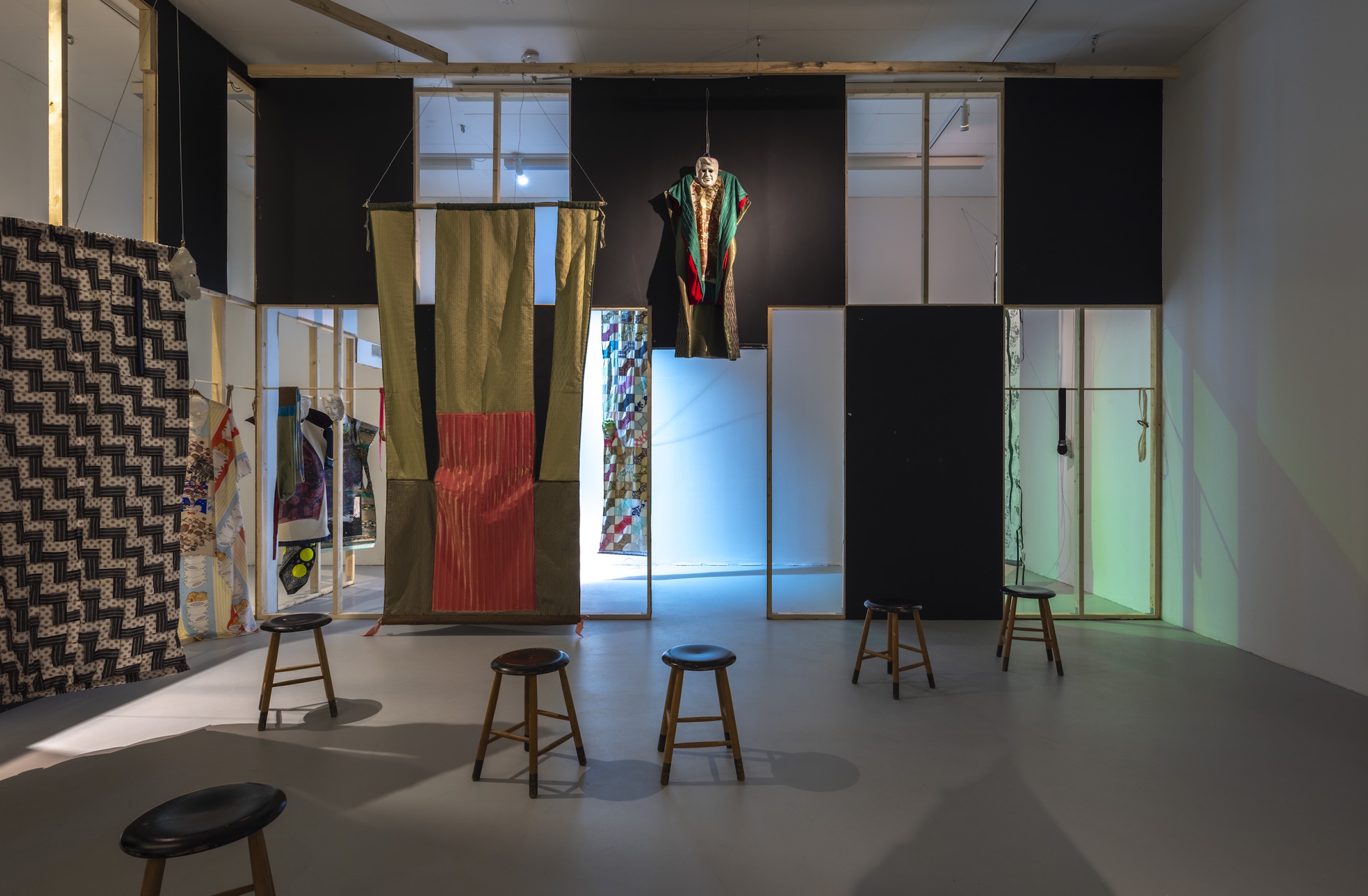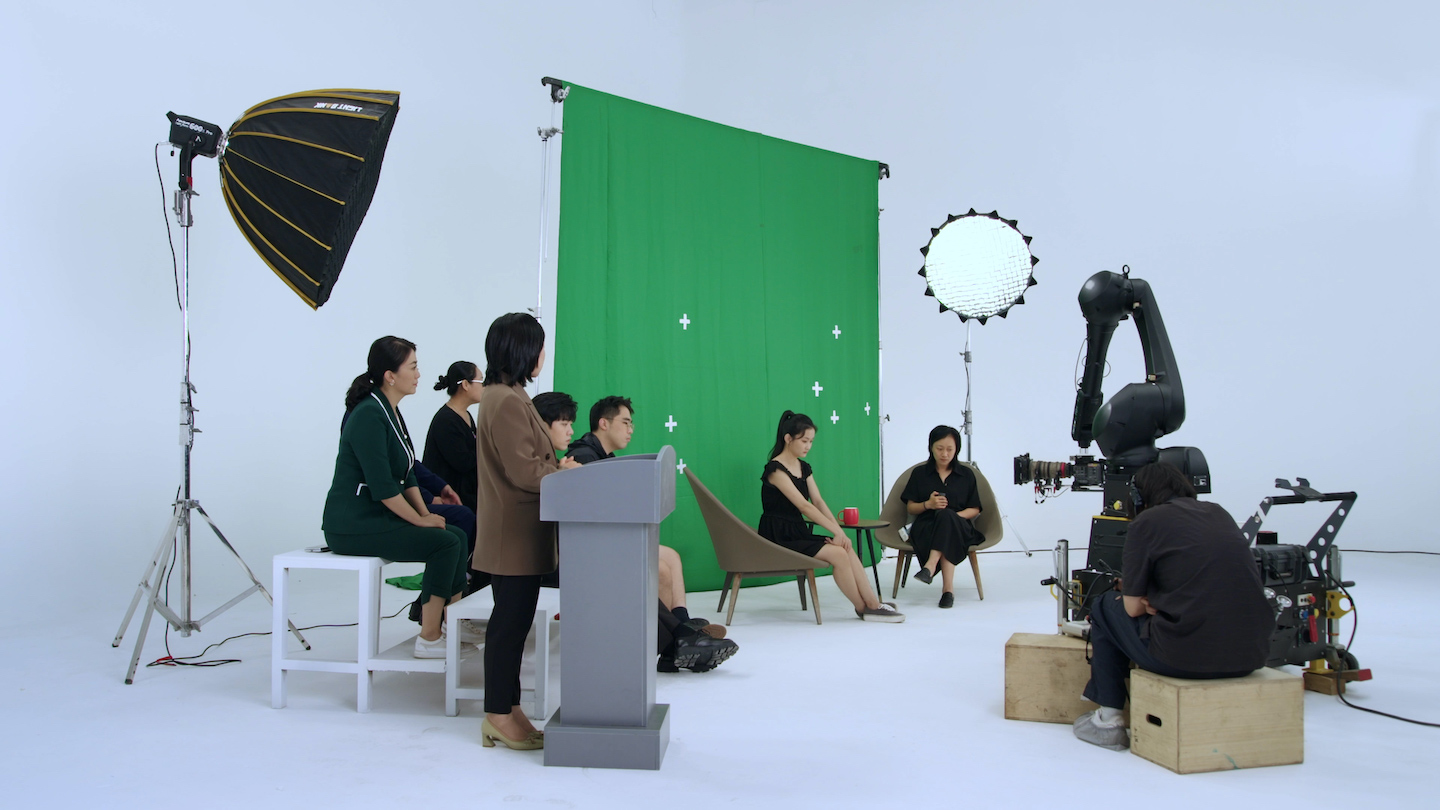May 4–July 7, 2024
“The Kennedys. Palm Beach. A charge of rape. It all made for a real-life soap opera in May 1991 that resulted in an arrest, a trial, and non-stop cable TV coverage.” So reads a recent Miami Herald summary of William Kennedy Smith’s trial, when John F. Kennedy’s nephew was acquitted of raping a twenty-nine-year-old woman.1 New York-based artist Jordan Strafer fictionalizes that case in “DECADENCE,” an exhibition at the Renaissance Society showing two films back-to-back on a large standing screen, starting with LOOPHOLE (2023). Clocking in at twenty-four minutes (the standard runtime of a TV episode), and filmed in the style of a 1980s soap crossed with a true crime reconstruction, LOOPHOLE draws on sociolinguist Gregory Matoesian’s observations on the “matrix of language, law, and society” that he saw mobilized in Smith’s court proceedings “to create and recreate cultural hegemony”—which Matoesian found to be inextricable with patriarchy.2 Echoing Matoesian’s findings, Strafer zooms in on what Matoesian described as the poetic, aesthetic, and “persuasive rhythms of trial talk” designed to “organize and intensify the inconsistencies in the victim’s account and shape them into a cumulative web of reasonable doubt.”
LOOPHOLE plays with that doubt by embellishing proceedings with a Lynchian surreality that heightens the courtroom’s existing theatricality. Interrogations highlight the “rhythms of domination” in the trial format’s asymmetry, where, as Matoesian writes, “Only attorneys can ask questions, while witnesses provide answers.” In one scene, the attorney adopts the tactic of incremental repetition when interrogating a female witness about her movements around the Kennedy estate. He constantly refers to the defendant as “the alleged rapist”—emphases always on alleged—as he drills her with questions that call back to previous answers in order to fold a sense of implausibility into her testimony. The framing recalls Matoesian’s reading of the patriarchal logic he saw in Smith’s trial, where expectations—and projections—of rationality obscured the nuances of the incident and the trauma responses it produced. For example, that the witness went to the beach with the rapist to look for the victim’s shoes, despite it being dark and being aware of the situation, even apologizing for meeting under such circumstances. Or when he uses the accuser’s inability to recall when her pantyhose came off to frame her as an unreliable narrator, referring to her mental instability as she breaks into tears.
But that staccato aggression dissipates when Smith takes the stand and sings Frank Sinatra’s “Summer Wind,” as if to demonstrate his impunity as a member of the American ruling class. That smooth, self-satisfied indifference is displayed throughout LOOPHOLE, which remains faithful to its source material down to the defence attorney’s relationship with a juror he eventually married, and to Strafer’s mother’s role in the defence team. (Her image, taken from Newsweek’s trial coverage, is frozen on the mini TV set bordered by two miniature seats modelled after those used for Oprah Winfrey’s talk show, which composes the installation Channel 2 (2024), in a corner alcove of the gallery. It appears again in three works on paper, encased in fused glass, which are displayed in vitrines on three different floors of the building.) In the film, her character is introduced in a segment composed like the intro for a spin-off show—think Ally McBeal crossed with NYPD Blue—titled “The Pen.” In an office, she drafts questions the defence attorney poses at trial, emphasizing his role’s performativity and the invisibility of hers. When her face fades into the accuser’s, often blurred by a circle as it was when the trial was televised, both women’s instrumentalization within America’s legal framework become linked: one is a tool, the other is a victim (or not).
The juror, a femme fatale whose affair with the attorney draws on psychosexual Hollywood thrillers like Fatal Attraction (1987) that had the 1980s and ’90s in an erotic chokehold, embodies a third role. In an emptied courtroom, she talks about scaling a wall to steal her neighbour’s strawberries as a girl, scratching her thighs for the pleasure, before dripping hot wax on the attorney’s chest as Smith whistles Sinatra’s “My Way” elsewhere. It’s all very cringe, white, and heteronormative—patriarchal, in a word—bringing to mind therapist Terrence Real’s description of the archetypal American power couple as a grandiose narcissistic man and compliant yet inwardly resentful woman with an impulse to protect—or serve—her partner: what Real calls a core collusion.
DECADENCE (2024), the second film in an intended trilogy co-commissioned by the Renaissance Society and The Vega Foundation for this show, amplifies that complicity by staging the party celebrating Smith’s acquittal. John F. Kennedy Jr. is there with his partner Carolyn, as is Smith’s lawyer, a Kennedy patriarch, and other WASPs. They make toasts, snort coke, sing, dance, and, in the end, swing, before the timeline shifts and the accuser is seen running from her attacker in the house until she finds a phone, dials a number, and slowly disassociates as it rings. The question of what really happened is left uncomfortably open, recalling a comment Strafer made to Marie de Brugerolle in 2023. Smith’s guilt, she argued, was less of a concern to her than staging the courtroom as a site of transgression: an instrument of a system built on a violence that the artist believes is inextricable with rape. “I wanted to make a story that was as American as possible,” Strafer said.3 Perhaps there’s nothing more American than violence without justice.
Miami Herald Archives, “The day a Kennedy was accused of rape at the family’s Palm Beach mansion,” Miami Herald (April 15, 2019), https://www.miamiherald.com/news/local/article229264784.html.
Gregory M. Matoesian, "'You Were Interested in Him as a Person?': Rhythms of Domination in the Kennedy Smith Rape Trial," Law & Social Inquiry, Vol. 22, No. 1 (Winter, 1997): 55-93.
Marie de Brugerolle, "Liminal Systems of Representation. A Conversation with Jordan Strafer," Flash Art (April 12, 2023), https://flash---art.com/article/jordan-strafer/.
